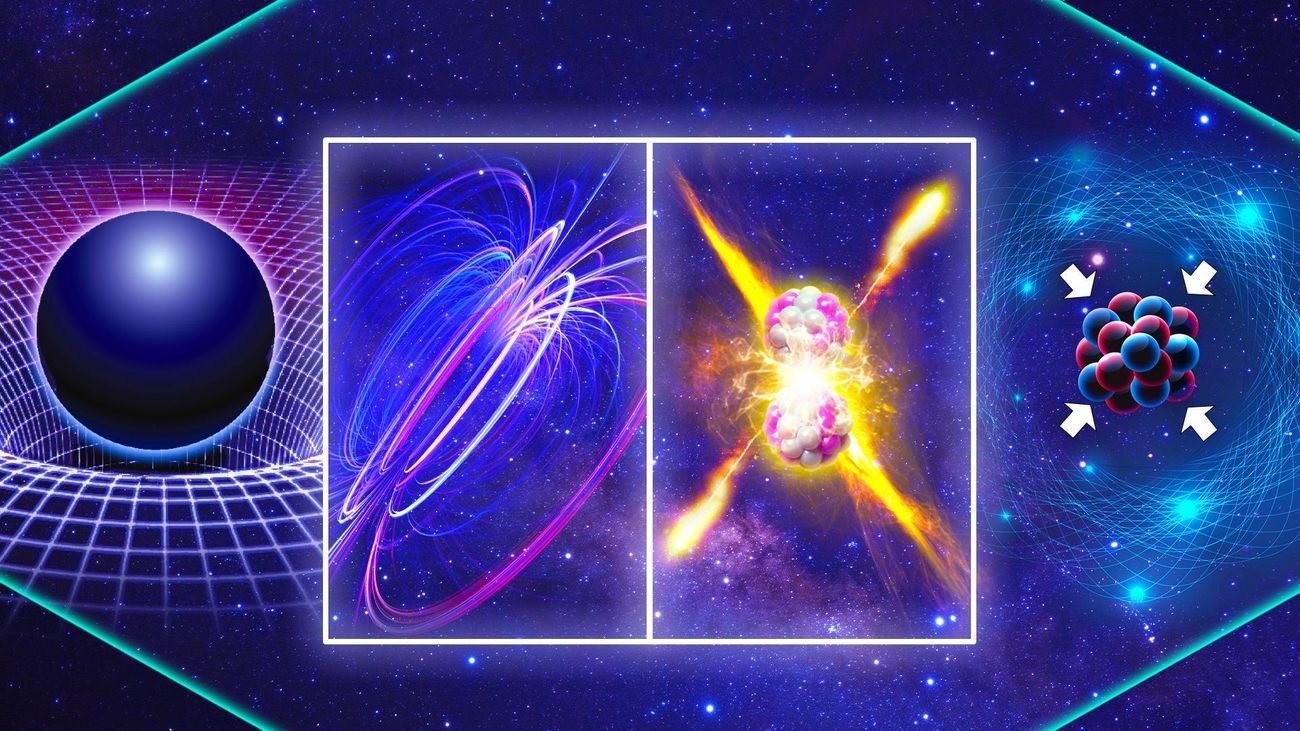
The Electroweak Epoch is a fascinating period in the early universe, occurring just after the Big Bang. But what exactly is the Electroweak Epoch? It is the era when the electromagnetic force and the weak nuclear force were unified into a single force. This epoch lasted from approximately (10^{-36}) to (10^{-12}) seconds after the Big Bang. During this time, the universe was incredibly hot and dense, with temperatures exceeding (10^{15}) Kelvin. Understanding this epoch helps scientists piece together the puzzle of how the universe evolved from a hot, dense state to the cooler, structured cosmos we see today. Dive into these 29 intriguing facts to learn more about this critical phase in cosmic history.
What is the Electroweak Epoch?
The Electroweak Epoch is a fascinating period in the early universe's history. It occurred just after the Big Bang and lasted until the universe was about 10^-12 seconds old. During this time, the electromagnetic force and the weak nuclear force were unified into a single force. Let's dive into some intriguing facts about this epoch.
- The Electroweak Epoch began approximately 10^-36 seconds after the Big Bang.
- During this period, the universe's temperature was around 10^15 Kelvin.
- The Higgs field played a crucial role in breaking the symmetry between the electromagnetic and weak forces.
- This epoch ended when the universe cooled to a temperature where the Higgs field could no longer maintain the unified force.
- The separation of the electromagnetic and weak forces is known as electroweak symmetry breaking.
- The particles responsible for mediating the weak force are the W and Z bosons.
- The photon is the particle that mediates the electromagnetic force.
- The discovery of the Higgs boson in 2012 confirmed the mechanism of electroweak symmetry breaking.
- The Electroweak Epoch is part of the Grand Unified Theory (GUT) era.
- During this epoch, the universe was a hot, dense plasma of particles.
The Role of the Higgs Field
The Higgs Field is essential in understanding the Electroweak Epoch. It provided mass to particles and caused the separation of forces. Here are some key points about its role.
- The Higgs field is a scalar field that permeates the universe.
- Particles interacting with the Higgs field gain mass.
- The Higgs mechanism explains why W and Z bosons are massive while photons are massless.
- The Higgs field's potential energy caused the universe to transition from a symmetric state to a broken symmetry state.
- This transition released energy, contributing to the universe's expansion.
The Importance of Symmetry Breaking
Symmetry Breaking is a critical concept in the Electroweak Epoch. It explains how forces and particles differentiated. Let's explore this further.
- Symmetry breaking occurs when a system transitions from a more symmetric state to a less symmetric one.
- In the Electroweak Epoch, symmetry breaking separated the electromagnetic and weak forces.
- This process also gave rise to the masses of fundamental particles.
- Without symmetry breaking, particles would remain massless, and the universe would be very different.
- The concept of spontaneous symmetry breaking is central to many areas of physics.
The Impact on Particle Physics
The Electroweak Epoch had a profound impact on Particle Physics. It set the stage for the development of the Standard Model. Here are some significant impacts.
- The Standard Model of particle physics describes the electromagnetic, weak, and strong forces.
- The Electroweak Epoch provided the conditions for the formation of quarks and leptons.
- Understanding this epoch helps physicists study the behavior of particles at high energies.
- Experiments at particle accelerators, like the Large Hadron Collider, recreate conditions similar to the Electroweak Epoch.
- Discoveries made during these experiments confirm theories about the early universe.
The Connection to Modern Cosmology
Modern Cosmology owes much to the Electroweak Epoch. It provides insights into the universe's formation and evolution. Here are some connections.
- The Electroweak Epoch is a key part of the Big Bang theory.
- Studying this epoch helps cosmologists understand the universe's initial conditions.
- The cosmic microwave background radiation contains imprints from the Electroweak Epoch.
- Observations of the universe's large-scale structure are influenced by events during this epoch.
The Final Word on the Electroweak Epoch
The Electroweak Epoch is a fascinating period in the universe's history. It bridges the gap between the Grand Unification Epoch and the Quark Epoch. During this time, the electromagnetic and weak nuclear forces were unified, leading to significant changes in the universe's structure. Understanding this epoch helps scientists piece together the puzzle of how the universe evolved from a hot, dense state to the complex cosmos we see today.
The Higgs boson played a crucial role in breaking the symmetry between these forces, giving particles their mass. This period also set the stage for the formation of quarks, leptons, and eventually, atoms.
Grasping the details of the Electroweak Epoch not only enriches our knowledge of cosmology but also deepens our appreciation for the intricate processes that have shaped our universe.
Was this page helpful?
Our commitment to delivering trustworthy and engaging content is at the heart of what we do. Each fact on our site is contributed by real users like you, bringing a wealth of diverse insights and information. To ensure the highest standards of accuracy and reliability, our dedicated editors meticulously review each submission. This process guarantees that the facts we share are not only fascinating but also credible. Trust in our commitment to quality and authenticity as you explore and learn with us.
